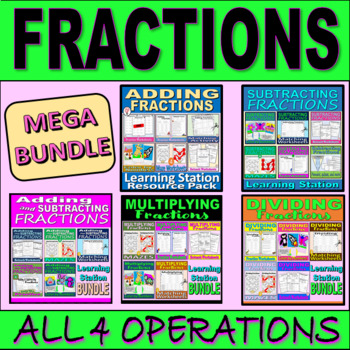
If you’re a math teacher, you’ve probably lamented with your colleagues over teaching 7th-grade math fractions. It can be difficult and downright frustrating to not be able to help your students who are struggling to master operations like addition, subtraction, multiplication, and division that involve fractions.
But fear not! Sometimes students just need a little extra help in conceptualizing factions, and here are some easy tips and tricks to do just that.
Play The Dominoes Game
Having students play games that require fraction subtraction or addition helps to make the necessary practice a bit more fun, you can find a variety of these games online.
Fraction dominoes are fun for 7th-grade students and help with fraction equivalence.
1. Start with 27 dominoes face down, and shuffle them around so they are in random order.
2. Each of the players gets 7 dominoes.
3. The student with the highest double plays 1st.
4. Moving clockwise, each student plays a domino that is of the same value against a played domino on the table. Equivalent value dominoes should always touch.
5. Students pick from the pile if they don’t have a domino with equivalent value, and keep them hidden from the opponents.
6. Students pass if there are no more dominoes left, and the first person to run out of tiles is the winner!
You can use regular dominoes or fraction dominoes for this game
Be Tactical About Being Tactile
Sometimes our students need to physically handle objects to conceptualize fractions. Without it, you may struggle to have them understand why they’re doing the steps.
Building fraction kits are a fun way to allow students to visually see and handle fractions in a tactile way. Building a fraction kit can be as simple as cutting lines of paper into various amounts and labeling them as the fractions they represent. Then later, when you introduce different operations, students can join the stripes of paper and physically hold the answer in their hands.
Speak The Right Language
The way we speak about fractions to our students affects how they comprehend them, and often with teaching fractions our language can be unnecessarily confusing. For example, if we’re trying to teach fraction reduction, it can sound as if we are asking our students to subtract, when we want them to make fractions with larger pieces. 2/5 to a student may seem smaller than 4/10 because we said we were reducing fractions. Instead using words like solving for the fewest pieces while using the fraction kit we previously mentioned.

Be Colorful
Using color shading techniques is helpful when discussing fractions because students get a physical representation of the fractions they are using. Pie graphs that students color in can be a helpful tool in teaching fractions because the pieces are pre-measured and students only have to shade the area being used. When students have to draw their own pie chart for fractions, they can easily give too much or too little space for each piece of the whole.
The plus side is that when you use these tools, students will have a great understanding of fractions, and then teachers can easily incorporate the other operations needed for higher-level math.
Scaffold
Remember that fractions are actually a combination of many skills. They need to understand simplifying fracitons, finding common denominators, and so much more. So help your students find success by remediating each skill.
I like to assess my students on the various skills and then put them in a learning station for the skill they need to develop. Then, as they master that skill, I move them to a learning station for the next skill, and then the next.
Here are some premade learning stations






